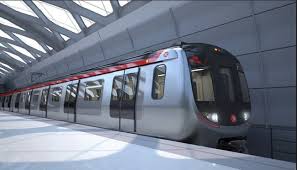DỊCH HOÀN THIỆN ĐỀ THI IELTS READING VÀ GIẢI THÍCH ĐÁP ÁN
The construction of roads and bridges
Roads
Although there were highway links in Mesopotamia from as early as 3500 bc, the Romans were probably the first road-builders with fixed engineering standards. At the peak of the Roman Empire in the first century ad, Rome had road connections totalling about 85,000 kilometres. ĐOẠN 1
Mặc dù đã có đường cao tốc ở Lưỡng Hà từ khoảng năm 3500 trước Công nguyên, nhưng người La Mã có lẽ là những người xây dựng đường đầu tiên với các tiêu chuẩn kỹ thuật cố định. Vào thời kỳ đỉnh cao của Đế chế La Mã vào thế kỷ thứ nhất sau Công nguyên, La Mã có hệ thống đường bộ dài tổng cộng khoảng 85.000 km.
total (v): Lên tới, tổng số lên tới
Roman roads were constructed with a deep stone surface for stability and load-bearing. They had straight alignments and therefore were often hilly. The Roman roads remained the main arteries of European transport for many centuries, and even today many roads follow the Roman routes. New roads were generally of inferior quality, and the achievements of Roman builders were largely unsurpassed until the resurgence of road-building in the eighteenth century. ĐOẠN 2
Đường của người La Mã được xây dựng có bề mặt đá sâu vì độ bền và chịu lực. Chúng có phương hướng đường thẳng và do đó thường là đồi núi. Đường của người La Mã vẫn là huyết mạch giao thông chính của châu Âu trong nhiều năm, và thậm chí ngày nay nhiều con đường đi theo các tuyến đường thời La Mã. Những tuyến đường mới thường kém chất lượng và những thành tựu của các thợ xây La Mã phần lớn là vượt trội cho đến khi sự trỗi dậy của ngành xây dựng đường vào thế kỷ 19.
With horse-drawn coaches in mind, eighteenth-century engineers preferred to curve their roads to avoid hills. The road surface was regarded as merely a face to absorb wear, the load-bearing strength being obtained from a properly prepared and well-drained foundation. Immediately above this, the Scottish engineer John McAdam (1756-1836) typically laid crushed stone, to which stone dust mixed with water was added, and which was compacted to a thickness of just five centimetres, and then rolled. McAdam’s surface layer - hot tar onto which a layer of stone chips was laid - became known as ‘tarmacadam’, or tarmac. Roads of this kind were known as flexible pavements. ĐOẠN 3
Với xe ngựa bốn bánh trong tâm trí, các kỹ sư thế kỷ 18 ưa thích những con đường quanh co để tránh đồi núi. Mặt đường được xem như là một bề mặt chỉ để giảm hao mòn, cường độ chịu lực có được là từ nền móng được xử lý kỹ lưỡng và rút nước tốt. Ngay trên bề nền móng này, kỹ sư người Scotland John MacAdam ( 1756-1836) thường đặt đá nghiền, thêm bột đá trộn với nước, và được nén thành độ này chỉ 5cm, và sau đó lăn. Lớp bề mặt của McAdam - dầu hắc nóng có một lớp vụn đá được gọi là "tarmacadam" hay tarmac đặt trên đó. Những con đường kiểu này được gọi là những mặt đường dẻo.
By the early nineteenth century - the start of the railway age - men such as John McAdam and Thomas Telford had created a British road network totalling some 200,000 km, of which about one sixth was privately owned toll roads called turnpikes. In the first half of the nineteenth century, many roads in the US were built to new standards, of which the National Pike from West Virginia to Illinois was perhaps the most notable. ĐOẠN 4
Vào đầu thế kỷ 19 - bắt đầu thời kỳ đường xe lửa - những người như John MacAdam và Thomas Telford đã tạo ra một mạng lưới đường bộ ở Anh tổng cộng khoảng 200.000km, trong đó khoảng 1/6 là những con đường thu phí cầu đường được tư nhân sở hữu gọi là đường đi có thu phí. Trong nửa đầu thế kỷ 19, nhiều con đường ở Mỹ được xây dựng theo tiêu chuẩn mới, trong đó đáng chú ý nhất là National Pike từ West Virginia đến Illinois.
to (prep): Theo ý kiến của; theo như
In the twentieth century, the ever-increasing use of motor vehicles threatened to break up roads built to nineteenth-century standards, so new techniques had to be developed. ĐOẠN 5
On routes with heavy traffic, flexible pavements were replaced by rigid pavements, in which the top layer was concrete, 15 to 30 centimetres thick, laid on a prepared bed. Nowadays steel bars are laid within the concrete. This not only restrains shrinkage during setting, but also reduces expansion in warm weather. As a result, it is, possible to lay long slabs without danger of cracking. ĐOẠN 6

1. Mua bộ đề gần 400 bài ielts reading - Dịch và giải chi tiết Chỉ 199k bao gồm toàn bộ đề trong bộ Cambridge ( từ bộ 1 -19) và nhiều đề thi thực tế ( xem danh sách 400 đề ielts reading tại đây). Xem bài mẫu tại đây, Bài mẫu 1, bài mẫu 2, bài mẫu 3. Giải đề bao gồm phần dịch bài đọc, dịch phần câu hỏi, giải thích chi tiết, ( chỉ có thể tải, in phần đề để luyện tập, phần giải chi tiết và dịch chỉ xem online).
>>>> >>>> Đặc biệt tặng kèm Dịch và giải chi tiết bộ đề Ielts listening từ Cam 10-18 và tặng kèm hơn 300 đề Ielts thực tế ( không có lời giải chi tiết chỉ có đề và đáp án) ( khác với bộ 400 đề ở trên). Vui lòng điền thông tin theo form tại đây và thanh toán theo thông tin CK trong form.
2. Đặc biệt dành tặng 100 bạn hoàn thành buổi học thử miễn phí khóa học Ielts Speaking online 1 kèm 1, các bạn sẽ được tặng bộ đề 400k bài Ielts reading và bộ đề Ielts Listening bộ Cam từ 10-18 gồm bài dịch và giải chi tiết, giải thích từ vựng khó ( thời hạn sử dụng trong vòng 2 tháng). Xem thông tin khóa học Ielts Speaking online 1 kèm 1 và đăng ký học thử tại đây.
The demands of heavy traffic led to the concept of high-speed, long-distance roads, with access - or slip-lanes - spaced widely apart. The US Bronx River Parkway of 1925 was followed by several variants - Germany’s autobahns and the Pan American Highway. Such roads - especially the intercity autobahns with their separate multi-lane carriageways for each direction - were the predecessors of today’s motorways. ĐOẠN 7
Bridges
The development by the Romans of the arched bridge marked the beginning of scientific bridge-building; hitherto, bridges had generally been crossings in the form of felled trees or flat stone blocks. Absorbing the load by compression, arched bridges are very strong. Most were built of stone, but brick and timber were also used. A fine early example is at Alcantara in Spain, built of granite by the Romans in AD 105 to span the River Tagus. In modern times, metal and concrete arched bridges have been constructed. The first significant metal bridge, built of cast iron in 1779, still stands at Ironbridge in England. ĐOẠN 8
Steel, with its superior strength-to-weight ratio, soon replaced iron in metal bridge-work. In the railway age, the truss (or girder) bridge became popular. Built of wood or metal, the truss beam consists of upper and lower horizontal booms joined by vertical or inclined members. ĐOẠN 9
The suspension bridge has a deck supported by suspenders that drop from one or more overhead cables. It requires strong anchorage at each end to resist the inward tension of the cables, and the deck is strengthened to control distortion by moving loads or high winds. Such bridges are nevertheless light, and therefore the most suitable for very long spans. The Clifton Suspension Bridge in the UK, designed by Isambard Kingdom Brunei (1806—59) to span the Avon Gorge in England, is famous both for its beautiful setting and for its elegant design. The 1998 Akashi Kaikyo Bridge in Japan has a span of 1,991 metres, which is the longest to date. ĐOẠN 10
Cantilever bridges, such as the 1889 Forth Rail Bridge in Scotland, exploit the potential of steel construction to produce a wide clearwater space. The spans have a central supporting pier and meet midstream. The downward thrust, where the spans meet, is countered by firm anchorage of the spans at their other ends. Although the suspension bridge can span a wider gap, the cantilever is relatively stable, and this was important for nineteenth-century railway builders. The world’s longest cantilever span - 549 metres - is that of the Quebec rail bridge in Canada, constructed in 1918. ĐOẠN 11
>>>>>Xem thêm:
♦ Tổng hợp câu trả lời, câu hỏi, từ vựng của hơn 70 chủ đề Ielts Speaking part 1
♦ Tổng hợp gần 400 đề thi Ielts reading ( bao gồm dịch, giải chi tiết, từ vựng)
Questions 1-3
Label the diagram below.
Choose NO MORE THAN TWO WORDS AND/OR A NUMBER from the passage for each answer.

Questions 4-7
Do the following statements agree with the information given in Reading Passage 315?
In boxes 4-7 on your answer sheet, write -
TRUE if the statement agrees with the information
FALSE if the statement contradicts the information
NOT GIVEN if there is no information on this
4. Road construction improved continuously between the first and eighteenth centuries.
5. In Britain, during the nineteenth century, only the very rich could afford to use toll roads.
6. Nineteenth-century road surfaces were inadequate for heavy motor traffic.
7. Traffic speeds on long-distance highways were unregulated in the early part of the twentieth century.
Questions 8-13
Complete the table below.
Use ONE WORD ONLY from the passage for each answer.
Bridges
|
Type of bridge |
Features |
Example(s) |
|
Arched bridge |
• Introduced by the 8 ………. • Very strong. • Usually made of 9 ………. |
Alcantara, Spain Ironbridge, UK |
|
Truss bridge |
• Made of wood or metal. • Popular for railways. |
|
|
Suspension bridge |
• Has a suspended deck. • Strong but 10 ………. |
Clifton, UK Akashi Kaikyo, Japan (currently the 11 ……….span) |
|
Cantilever bridge |
• Made of 12 ………. • More 13 ………. than the suspension bridge. |
Quebec, Canada |
ĐÁP ÁN, GIẢI CHI TIẾT và DỊCH HOÀN THIỆN ĐỀ THI IELTS READING:
The construction of roads and bridges
Questions 1-3
Label the diagram below.
Choose NO MORE THAN TWO WORDS AND/OR A NUMBER from the passage for each answer.

Tarmacadam ( 1.... hot tar and stone chips)
Giải thích: đoạn 3
McAdam’s surface layer - hot tar onto which a layer of stone chips was laid - became known as ‘tarmacadam’, or tarmac
Middle layer ( 2...5cm deep)
Giải thích: đoạn 3
Immediately above this, the Scottish engineer John McAdam (1756-1836) typically laid crushed stone, to which stone dust mixed with water was added, and which was compacted to a thickness of just five centimetres, and then rolled.
Crushed stone dust and 3...water....
Giải thích: đoạn 3
Immediately above this, the Scottish engineer John McAdam (1756-1836) typically laid crushed stone, to which stone dust mixed with water was added, and which was compacted to a thickness of just five centimetres, and then rolled.
Questions 4-7
Do the following statements agree with the information given in Reading Passage 315?
In boxes 4-7 on your answer sheet, write -
TRUE if the statement agrees with the information
FALSE if the statement contradicts the information
NOT GIVEN if there is no information on this
4.F Road construction improved continuously between the first and eighteenth centuries.
Việc xây dựng dường được cải thiện liên tục từ thế kỷ đầu tiến đến thế kỷ 18
Giải thích: đoạn 2
New roads were generally of inferior quality, and the achievements of Roman builders were largely unsurpassed until the resurgence of road-building in the eighteenth century

1. Mua bộ đề gần 400 bài ielts reading - Dịch và giải chi tiết Chỉ 199k bao gồm toàn bộ đề trong bộ Cambridge ( từ bộ 1 -19) và nhiều đề thi thực tế ( xem danh sách 400 đề ielts reading tại đây). Xem bài mẫu tại đây, Bài mẫu 1, bài mẫu 2, bài mẫu 3. Giải đề bao gồm phần dịch bài đọc, dịch phần câu hỏi, giải thích chi tiết, ( chỉ có thể tải, in phần đề để luyện tập, phần giải chi tiết và dịch chỉ xem online).
>>>> >>>> Đặc biệt tặng kèm Dịch và giải chi tiết bộ đề Ielts listening từ Cam 10-18 và tặng kèm hơn 300 đề Ielts thực tế ( không có lời giải chi tiết chỉ có đề và đáp án) ( khác với bộ 400 đề ở trên). Vui lòng điền thông tin theo form tại đây và thanh toán theo thông tin CK trong form.
2. Đặc biệt dành tặng 100 bạn hoàn thành buổi học thử miễn phí khóa học Ielts Speaking online 1 kèm 1, các bạn sẽ được tặng bộ đề 400k bài Ielts reading và bộ đề Ielts Listening bộ Cam từ 10-18 gồm bài dịch và giải chi tiết, giải thích từ vựng khó ( thời hạn sử dụng trong vòng 2 tháng). Xem thông tin khóa học Ielts Speaking online 1 kèm 1 và đăng ký học thử tại đây.
Answer:
1. hot tar
2. 5 cm
3. water
4. FALSE
5. NOT GIVEN
6. TRUE
7. NOT GIVEN
8. Romans
9. stone
10. light
11. longest
12. steel
13. stable

.png)

.jpg)




